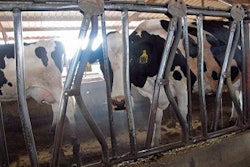TORONTO (CNW) — The Canadian Partnership for Consumer Food Safety Education is reminding all Canadians, we all have a role to play in ensuring our homes are food-safe.
Research findings reveal despite the fact a majority of adults feel confident they understand and follow safe food handling procedures, a sizeable number do not consistently follow certain safe food handling practices.
Here are some common cooking blunders:
- The quick wash up (or lack of wash up). Only 50% of consumers reported washing their hands for 20 seconds, before and after handling food. You've heard it before, but we all need the reminder — wash your hands before cooking, and during cooking, especially when switching between handling different foods. Wash with soap and water for 20 seconds -- that's 2 choruses of 'Happy Birthday' (hummed under your breath).
- Skipping the fruit and veggie wash up. Be sure to wash all fruits and vegetables thoroughly in cool drinkable water, including those you peel or cut like melons, oranges, and cucumbers.
- Bringing meats up to room temperature before grilling. This is a common 'cooking show' recommendation that really has no benefits and is loaded with the risk of promoting the growth of harmful bacteria. Keep foods chilled in the fridge at 4◦C until ready to cook - and that includes marinating too.
- Cooking by colour. You can't rely on the 'colour test' to know when meats are done. Cook meat and poultry to proper temperatures to know for sure, using a digital food thermometer to test for doneness. It's a pretty simple step and saves a lot of 'doneness debates/arguments' that happen at the grill. Only 15% of people consistently use a food thermometer. Use this handy chart to know when food is cooked properly.
- Using the same cooking equipment for raw as for cooked. Be sure to wash up barbecue tongs after flipping steaks, burgers, chicken, kabobs etc during cooking, and before you use them to take food off the grill to serve. Or better yet, have 2 pairs of tongs — 1 for raw and 1 for cooked. The same goes for cutting boards of course!
For more information and tips on how to keep your home food-safe, visit www.befoodsafe.ca.






















